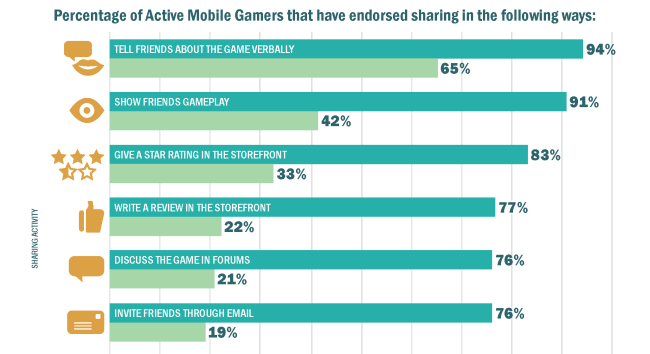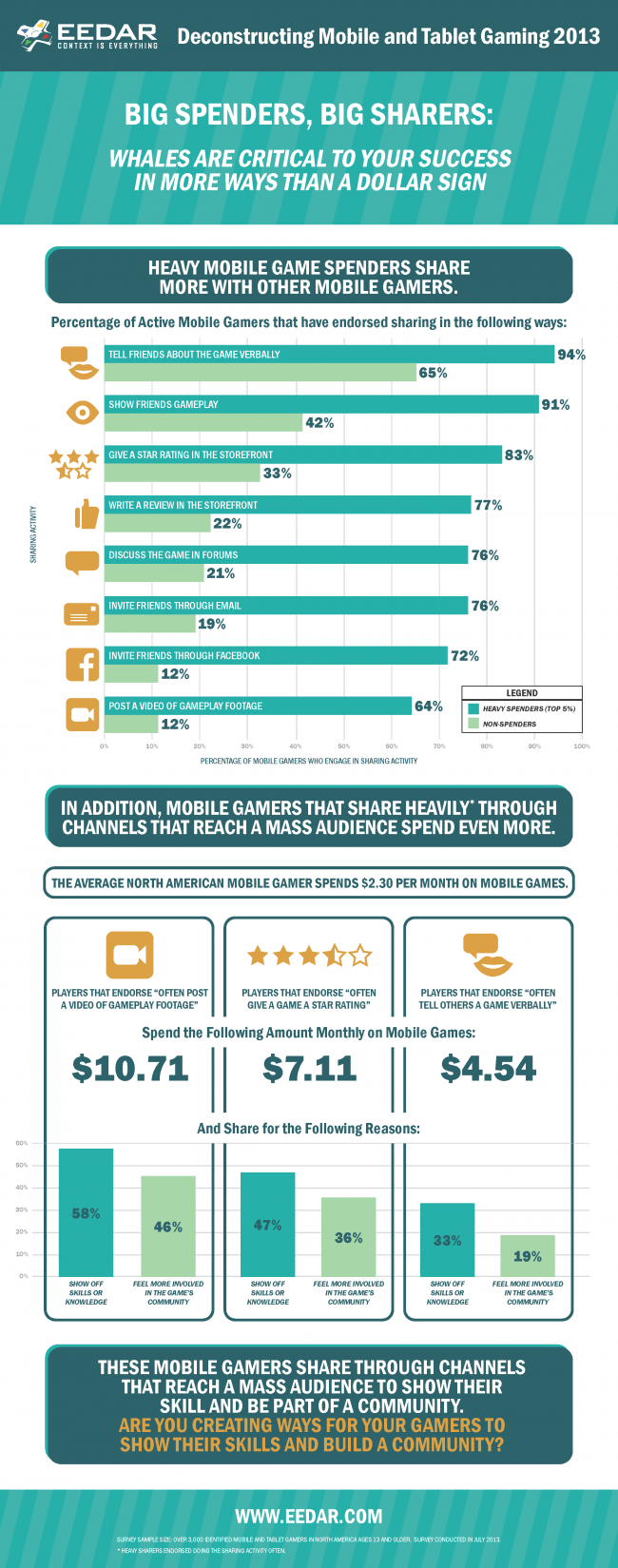- Wondering how to get Monopoly GO! free rolls? Well, you’ve come to the right place. In this guide, we provide you with a bunch of tips and tricks to get some free rolls for the hit new mobile game. We’ll …
Best Roblox Horror Games to Play Right Now – Updated Weekly
By Adele Wilson
Our Best Roblox Horror Games guide features the scariest and most creative experiences to play right now on the platform!The BEST Roblox Games of The Week – Games You Need To Play!
By Sho Roberts
Our feature shares our pick for the Best Roblox Games of the week! With our feature, we guarantee you'll find something new to play!All Grades in Type Soul – Each Race Explained
By Adele Wilson
Our All Grades in Type Soul guide lists every grade in the game for all races, including how to increase your grade quickly!
New study shows that gamers who spend more also share more
A new study this week from specialty research firm EEDAR has revealed an insightful connection between how much a person is active in an online mobile game community, and how much they actually end up spending in the game itself. The study also comes hot on the heels of a recent poll conducted by Applifier, which revealed that the highest sources of discovery for a mobile game include reading a user review, hearing about it from a friend or family member, and seeing a friend or family member playing the game.
In essence, EEDAR’s study of 3,000 people who refer to themselves as mobile and tablet gamers has shown a direct correlation between gamers who spend more (referred to as “whales” in the findings) and gamers who share more: that these two gaming habits have simply become one and the same in the mobile games space. In every single category of sharing that was examined for the study, EEDAR found that the heavy-spending mobile gamer’s tendencies to share about a game were at a significantly larger margin than other casual players and non-spenders.

For instance, a whopping 94% of big spenders were likely to tell their friends about a game verbally, as compared to the 65% of low-spending players. Conversely, 91% of big spenders were prone to show their friends gameplay footage, over the 42% of more casual spenders. Other categories of sharing included giving a star rating in a storefront, writing a review on a storefront, and discussing the game online via various forums: each of which brought in a high showing of 76% and above for these “whale” gamers.

A new study this week from specialty research firm EEDAR has revealed an insightful connection between how much a person is active in an online mobile game community, and how much they actually end up spending in the game itself. The study also comes hot on the heels of a recent poll conducted by Applifier, which revealed that the highest sources of discovery for a mobile game include reading a user review, hearing about it from a friend or family member, and seeing a friend or family member playing the game.
In essence, EEDAR’s study of 3,000 people who refer to themselves as mobile and tablet gamers has shown a direct correlation between gamers who spend more (referred to as “whales” in the findings) and gamers who share more: that these two gaming habits have simply become one and the same in the mobile games space. In every single category of sharing that was examined for the study, EEDAR found that the heavy-spending mobile gamer’s tendencies to share about a game were at a significantly larger margin than other casual players and non-spenders.
For instance, a whopping 94% of big spenders were likely to tell their friends about a game verbally, as compared to the 65% of low-spending players. Conversely, 91% of big spenders were prone to show their friends gameplay footage, over the 42% of more casual spenders. Other categories of sharing included giving a star rating in a storefront, writing a review on a storefront, and discussing the game online via various forums: each of which brought in a high showing of 76% and above for these “whale” gamers.
All of these findings lead to the further conclusion that “Mobile gamers [who] share heavily through channels that reach a mass audience spend even more.” In addition to these eye-opening figures, EEDAR’s study also determined that big spenders were more likely to share about a game in order to show off their skills and knowledge about a specific title, while more timid spenders would share to feel more involved in the overall community of games. However, it should still be noted that “whales” are much more of a rare thing in today’s mobile industry, and that the average gamer in North America only tends to spend around $2.30 per month on mobile games.
So to the developers themselves, EEDAR poses this very simple question: “Are you creating ways for your gamers to show their skills and build a community?” Because if you are, then it would seem like there’s no finer way right now to help monetize your game and encourage your big players to spend a little more for something they already enjoy. As Patrick Walker, the Senior Analyst at EEDAR states, “Mobile Game companies need to reframe how they view their heaviest spenders. These gamers are not just the ‘Whales’ who spend the most money; these loyal users are the evangelists that spread the word about your game and the best source of new low cost, high quality users.”
Do you consider yourself a “whale” in any mobile game community? Does that mean the low-spending opposite is considered a “shrimp”? So many questions and more! You can scope out the full EEDAR infograph report on these findings just below this paragraph, and be sure to keep the discussion going down in the replies.

More articles...
Monopoly GO! Free Rolls – Links For Free Dice
By Glen Fox
Wondering how to get Monopoly GO! free rolls? Well, you’ve come to the right place. In this guide, we provide you with a bunch of tips and tricks to get some free rolls for the hit new mobile game. We’ll …Best Roblox Horror Games to Play Right Now – Updated Weekly
By Adele Wilson
Our Best Roblox Horror Games guide features the scariest and most creative experiences to play right now on the platform!The BEST Roblox Games of The Week – Games You Need To Play!
By Sho Roberts
Our feature shares our pick for the Best Roblox Games of the week! With our feature, we guarantee you'll find something new to play!All Grades in Type Soul – Each Race Explained
By Adele Wilson
Our All Grades in Type Soul guide lists every grade in the game for all races, including how to increase your grade quickly!







